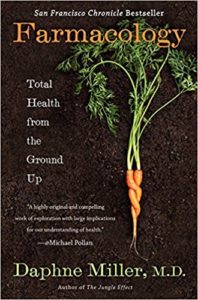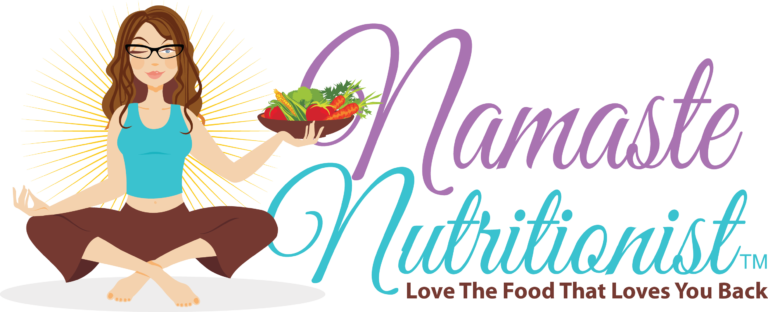My first encounter with wild food came on a fine summer evening in Vermont.
 Luckily for us, my sister-in-law is skilled in wild mushroom hunting. She oversaw us as we foraged and collected a large bundle of forest mushrooms.
Luckily for us, my sister-in-law is skilled in wild mushroom hunting. She oversaw us as we foraged and collected a large bundle of forest mushrooms.
Then, we fished on Lake Chelan. As a vegetarian back then, my self-assigned role was that of the “humane committee”. I made sure the fish didn’t suffer, to the best of my ability.
We ended the with a lucky stumble upon wild blueberries. We harvested until our containers were full.
I remember how impressed we all felt. I had never had a meal that truly came off of the land that very day. My parents, siblings and I marveled in how the land had provided for us in a way that seemed so effortless.
Marijuana isn’t the only weed drawing attention for its health benefits these days.
The Alchemist’s Kitchen also says this about wild foods:
“When we eat [wild] plants it informs our bodies of our own microclimate, adaptive challenges, local bacteria, and environmental gifts. Eating these plants gives us access to all of the information that we need to know to thrive in our current location and tells our bodies that we are in Brooklyn, not Hong Kong, and not Chile.”
Eating on the Wild Side: The Missing Link to Optimum Health
How a plant defends itself
Animals protect themselves from injury and death with claws and teeth. But since most plants do not possess either, they produce these phytochemicals (aka “plant chemicals) to protect themselves from insects, disease, UV rays, weather, and predation. Domestic plants also have an advantage that wild plants do not have: humans who cultivate and care for them.
How you benefit from these natural defenses
Since wild plants, or weeds, must look out for themselves (and defend itself against humans who want to murder it), weeds develop super strength to maintain themselves. They send strong taproots deep into the soil, allowing them to access soil nutrients, such as calcium, magnesium, potassium, iron, and other trace minerals. Since wild plants are so adept at survival and propagation despite their odds (you’ve no doubt noticed dandelion’s tenacity!), they tend to be much more nourishing as a result of the plants’ clever skills at reaching nutrients.
Learn more about how plants can be our pharmacy with this brilliant book:
Farmacology: Total Health from the Ground Up
Are the WEEDS near you edible SUPERFOODS?
If you’re ready to explore the powerhouse plants in your backyard, start by learning about them. Before you chow down, it’s essential that you identify plants with absolute certainty. I’ve taken a few classes from experts in wild edibles to help me accomplish this. And, I have a lovely guide book to assist me in the field, such as this award winning guide to wild edibles:
The Scout’s Guide to Wild Edibles: Learn How To Forage, Prepare & Eat 40 Wild Foods
And to be clear, I’m still a novice. There is much to learn. Some of the plants I’m comfortable harvesting from the wild are nettles, wild rose, rose hips, seaweed, lamb’s ears, licorice, yarrow, feverfew, dandelion, wild mushrooms, and wild flowers and wild berries of all kinds.
Although I’ve helped pick many wild mushrooms, I still would not do this without expert guidance.
Here is my post on how to make candied pansies, which I did for my wedding cupcakes.
IMPORTANT: Before you eat wild foods, learn what you’re doing
If you’re interested, consider registering for a class so you can become more skilled in learning which plants are truly safe to eat. There are many nuances to identifying plants correctly. For example, avoid harvesting from an area where plants may have been sprayed with pesticides, herbicides or fungicide intended to kill them.
If you aren’t sure, it’s better to avoid eating them. Disclosure: In no way should this blog post be taken as a definitive guide in what wild foods to eat. My role here is to inform you that you can eat wild foods, but you assume the responsibility in getting properly educated on this subject before eating them. And you assume all risks in identifying which are safe to consume.
Take a walk on the wild side: your rewards
After all of this learning, I think you’ll be delighted at the satisfaction in knowing how to find edible foods – a skill long since lost among modern humans. Plus, you’ll discover numerous superfoods that you don’t have to pay for, or take care of in your garden!
See the following infographic
The infographic below shows common edible plants that grow nearly everywhere, many which may be in your own backyard or neighborhood. It was originally found here, and has been republished with permission.

Source: Fix.com Blog
Book recommendations contain affiliated links that support this website
In the comments section, please tell me about YOU:
- Have you ever eaten any wild food?
- If so, do you remember what you ate? What was your experience?
- Do you plan to learn more about this fun and nourishing food experience?
Health benefits of wild edibles (Mother Jones)




